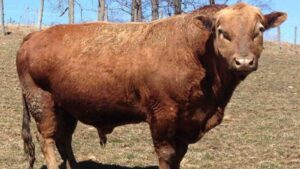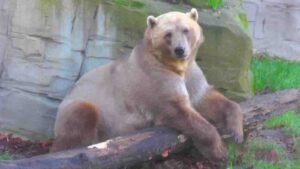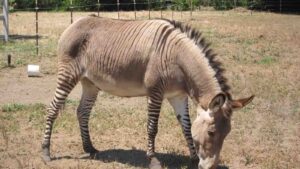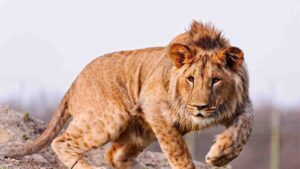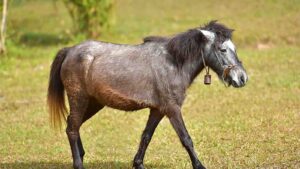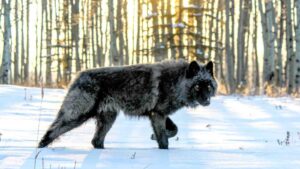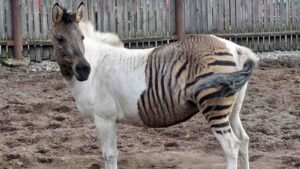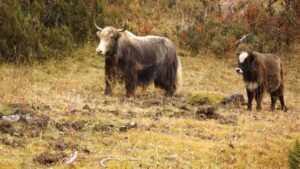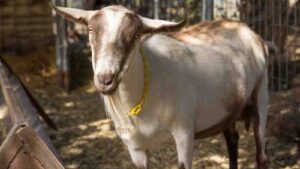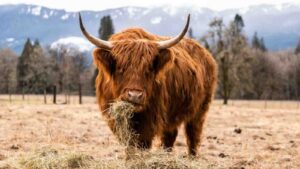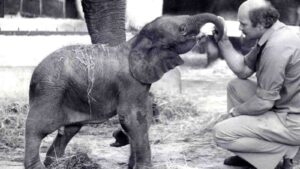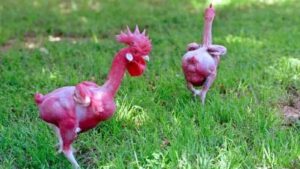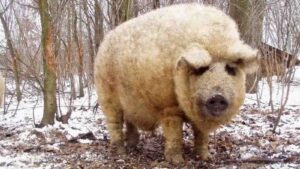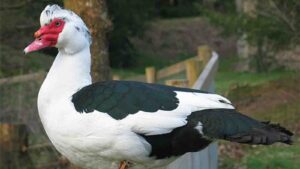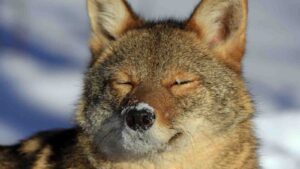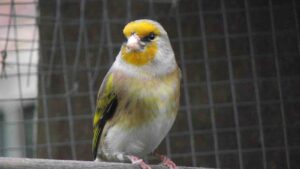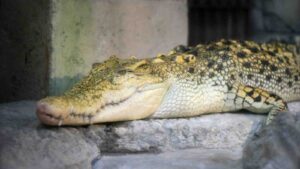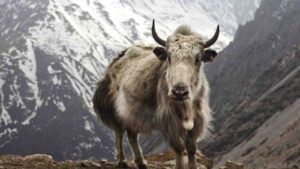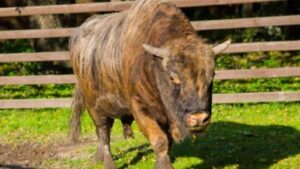Craziest Animal Created By Scientist
Summary
TOP 20 Craziest Animal Created By Scientist .They are craziest. They are hybrids. Some of the most popular and favored animals that we encounter every day are basically man-made. These rare and unseen bizarre animals are not a new phenomenon; […]

TOP 20 Craziest Animal Created By Scientist .They are craziest. They are hybrids. Some of the most popular and favored animals that we encounter every day are basically man-made. These rare and unseen bizarre animals are not a new phenomenon; many have been around for thousands of years. Let’s know about the top 20 craziest animals created by man.
Video: Craziest Animal Created By Scientist
Beefalo:
These grazing animals are the offspring of American buffalos and domestic cattle. The first accidental crossing of these species occurred about 300 years ago, but scientists deliberately engineered the specimen to help with the beef production industry in 1880.
They are quite large in frame and well-muscled. However, they don’t have as prominent a hump as buffalos do. They are quite resistant to disease. Their buffalo genes allow them to be harder than standard cattle. They live long and fertile lives and remain active breeders throughout their years. Dams make very good mothers!
Their beef is highly regarded for its flavor, and studies show that it’s lower in cholesterol and fat. Protein levels are also up to 6% higher in beefalo meat than in other beef. So when are you planning to have this meat?
Video: Craziest Animal Created By Scientist
Grolar bear:
Born as a result of inbreeding between a grizzly bear and polar bear. It is also called pizzly bear or nanulak. It is not a species of bear. This is extremely rare in the wild. Scientists confirmed the grolar bear in 2006 by testing the DNA of an individual bear, which was shot in the Canadian Arctic, Sachs.
Two were born in Osnabruck Zoo, Germany, in 2004. One of them was a male, while the other was a female. They have smaller bodies as compared to polar bear cubs, but they were bigger than the grizzly bear cubs.
It is primarily recognized by its creamy white fur, which is a polar bear’s trait. Like a grizzly bear, it displays brown patches around its eyes, feet, and back. The amazing part is their bellies touch the ground while their rear legs are splayed.
Zonkey:
It has a large head and long ears just like a donkey. The female one gives birth after twelve months of pregnancy, and surprisingly, the baby is able to walk a few minutes after birth.
This cute little four-legged fella is the cross between a zebra and a donkey. While he may be all donkey from the torso up, those striped legs scream zebra all the way.
People started this crossbreeding in the 19th century to create animals with great stamina that can be used for transportation of heavy loads. In fact, they are still used as working animals in some parts of the world today.
Leopon:
The gorgeous and almost majestic coat on this animal is the result of a lioness mating with a male leopard. The very first leopon was produced in India in 1910.
Unlike lions, they’re good climbers. They also enjoy water, which often distresses their lioness mothers. They are big animals, nearly the size of a lion, with stout bodies, but their legs are shorter, like a leopard’s.
They eat carnivores such as crocodiles, tigers, and lions, and if necessary, they would eat other Leopons.
I think that they should be conserved because they are very close to extinct. By this year, there are less than 100 left in the world.
Hinny:
These mixtures of male horses and female donkeys are slightly smaller than horses and they have thicker fur coats. They also cannot reproduce on their own, making them very difficult to obtain.
Like the mule, the hinny is almost always sterile. They are similar to mules in that they are generally more intelligent than horses and more cooperative than donkeys. Both are also healthier and less expensive to feed than horses. This is a trait these hybrids get from their donkey heritage. Also, they are on average slightly smaller than mules.
Wolfdog:
You can probably guess what two animals make up this species! They were first bred together for people who wanted to own exotic-looking animals. Because they’re genetic mixtures of both dogs and wolves, it’s difficult to predict physical and behavioral characteristics.
The United States Department of Agriculture refers to the animals as wolf-dog hybrids. Rescue organizations consider any dog with wolf heritage within the last five generations to be a wolf dog.
In 1998, the USDA estimated an approximate population of 300,000 wolf dogs in the United States, with some other sources giving a population possibly as high as 500,000.
Zebroid:
Cross between a zebra and any other zebra hybrid. Zebroid is the generic name for all zebra hybrids. There is generally no distinction made as to which zebra species is used. Such as zorse, zebrule, zonkey, zebonkey, and zony.
The stripes on the zorse usually cover the entire animal. They usually have long hair. Zorses tend to have less muscle mass and enjoy open areas much more than purebred. They are animated and do a lot of running when out. They can be from the size of a pony to the size of a horse. The most common type of zebroid’s life expectancy is around 30 years.
Mule:
A mule is the offspring of a male donkey and a female horse. Horses and donkeys are different species, with different numbers of chromosomes.
All male mules and most female mules are infertile. The size of a mule and work to which it is put depends largely on the breeding of the mule’s dam. Mules can be lightweight, medium weight, or even when produced from draft horse mares, of moderately heavy weight.
They are usually more patient, sure-footed, hardy, and long-lived than horses. Also they are considered less obstinate, faster, and more intelligent than donkeys.
Read More: Animals That Look Like Celebrities
Dzo:
hybrid of yak and domestic cattle. The word dzo technically refers to a male hybrid, while a female is known as a dzomo or zhom. Alternative Romanizations of the Tibetan names include zho and zo. In Mongolian, it is called khainag. There is also the English language combination of the words yak and cow, though this is rarely used.
Dzomo are fertile, while Dzo are sterile. They are larger and stronger than cattle or yak. In Mongolia and Tibet, khainags are thought to be more productive than cattle or yaks in terms of both milk and meat production.
Freckles the Spider Goat:
Prof. Randy Lewis shows Adam Rutherford genetically modified goats at a farm at Utah State University, US, which produce large quantities of a spider silk that is among the strongest substances known to man.
The transplanted gene means the goat produces milk containing an extra protein, which is extracted and spun into spider silk thread.
Indeed, she is an extraordinary creation, an animal that could not have existed at any point in history before the 21st century. She is all goat, but she has something extra in every one of her cells. Freckles is also part spider.
Scottish Cow:
Their hair is always long, sometimes reaching about 13 inches with a slight wave. Since their coat is double-layered, the outer hair is oiled to prevent rain seeping into their skin, while the downy undercoat provides warmth during the rough and rainy Scottish winters.
These cute Scottish cows have quite small teats with well-formed udders, and this, combined with their milk’s high butterfat content, ensures that calves are sufficiently nourished from an early age.
Records also show that Highland is actually the oldest registered breed in the world.
Motty:
The Asian elephant Elephas maximus and the African elephant, Loxodonta Africana, are not only regarded as different species but also belong to different genus. Crossbreeds between two individuals, belonging to the same genus but different species, are in most cases sterile.
So when the Asian elephant cow Sheba in Chester Zoo, England, gave birth to a calf with an African elephant bull Jumbolino as father, the scientists became puzzled.
The staff had observed several mating between the elephants, but since a cross was impossible, no one expected a delivery.
The male calf, named Motty, had an African elephant’s cheek, ears, and back, while nail numbers and the single trunk finger were like Asians.
This sensational elephant died two weeks after birth due to a stomach problem.
Featherless Chicken:
This could be the future of mass poultry farming in warmer countries, says an Israeli geneticist who has created this bare-skinned prototype.
The new chicken would be lower in calories, faster-growing, environmentally friendly, and more likely to survive in warmer conditions, claims Avigdor Cahaner of the Hebrew University of Jerusalem. He created his red-skinned chicken by selectively crossing a breed with a naturally bare neck with a regular broiler chicken.
Though this chicken is an ugly little beast, there are obvious potential benefits of not having feathers. Nutrients wouldn’t go into producing feathers, and there would be no feathers to get rid of at the end.
Mangalica:
One of the fattiest pigs in the world, compared to over 50% in modern breeds. But that meat is considered among the tastiest porks in the world.
The meat of the Mangalica pig is reddish, highly marbled with creamy white fat, and is high in omega-3 fatty acids and natural antioxidants. This is due to the natural diet of forage, wheat, corn, and barley. Its lard is lighter and melts at a lower temperature than lard from other pigs. It contains more unsaturated fat.
In Hungary, most Mangalica pork becomes sausage or salami. Because of the high fat content, cured pork products can spend a longer time drying, which deepens the flavor without losing moisture.
The Mulard:
This is the piece displayed breed, which is used for the purpose of quality meat production. Wild birds breed mulard not meet in an open environment; they grow only in large poultry farms or small household farms.
They are very simple because they are not whimsical and well grow on usual green grass and vegetables. Another no less important feature is the quiet nature. Mulard balanced, so they almost do not get nervous. After all, when the duck gets nervous or worried, it begins to emit different sounds. When the whole pack of them begins sounding, that is sometimes bad for the man. This lovely duck is much quieter.
The Coydog:
The Coydog is a mix between the wild coyote and the domestic dog. They usually have very piercing eyes. They are said to be not generally playful or outgoing. Anyone keeping one of these dogs needs to be a 100% firm, confident, consistent pack leader.
Weak-minded people will run into problems. This animal needs someone who understands natural dog behavior and will work with the instincts of the dog.
Coydogs are not a good choice of a pet for most people, as they do not have the knowledge regarding natural canine instinct and are not strong-minded enough to take one of these animals on.
The Mule Bird:
The British finches are made up of several species of finch, which were formerly very popular as cage birds in Great Britain. They are not currently commonplace but are still kept by a few dedicated fanciers.
During the Victorian era, it was found that if a British finch, such as a goldfinch, was crossed with a canary, the result was an attractive-looking, good-singing bird. The resulting birds were sterile but continue to be bred to this day under the name of mules. Many clubs specialize in mules. Also around this time, a few people began to experiment crossing British finches.
The breeding of such hybrids can, however, be notoriously difficult. When writing about hybrid pairs, the cock always comes first.
The Golden Crocodile:
Hybrid of saltwater crocodile and Siamese crocodile.
The Philippine crocodile is a crocodilian endemic to the Philippines. It is a relatively small freshwater crocodile. It has a relatively broad snout and thick bony plates on its back. This is a fairly small species, reaching breeding maturity at 1.5 m and 15 kg in both sexes and a maximum size around 3.1 m. Females are slightly smaller than males. Philippine crocodiles are golden brown in color, which darkens as they mature.
Read More: Most Dangerous Birds on Earth
The Yakalo:
Cross of the Yak, scientifically named Bos grunniens, and the American bison known as buffalo in North America.
It was produced by hybridization experiments in the 1920s, when crosses were made between yak bulls and both pure bison cows and bison cattle hybrid cows. As with many other interspecific crosses, only female hybrids were found to be fertile.
Few of the hybrids survived, and the experiments remained discontinued.
The Zubron:
First created by Leopold Walicki in 1847, although the hybrid may also have appeared at an earlier time. After World War I, various scientists considered it possible.
In addition, the animal could be bred on marginal grazing land with no farm infrastructure and with minimal husbandry in huge state agricultural farms. From 1958, the work was continued by the Polish Academy of Sciences in various laboratories. During the first 16 years of experiments, a total of 71 animals were born, including Filon, the first named Zubron in August.
This animal was intended to become a hardy and cheap alternative to cattle.
If you are about to breed any new species, what would be those two? Let us know in our comment section.
